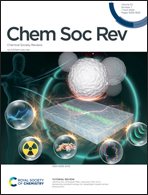Towards high performance and durable soft tactile actuators
Abstract
Soft actuators are gaining significant attention due to their ability to provide realistic tactile sensations in various applications. However, their soft nature makes them vulnerable to damage from external factors, limiting actuation stability and device lifespan. The susceptibility to damage becomes higher with these actuators often in direct contact with their surroundings to generate tactile feedback. Upon onset of damage, the stability or repeatability of the device will be undermined. Eventually, when complete failure occurs, these actuators are disposed of, accumulating waste and driving the consumption of natural resources. This emphasizes the need to enhance the durability of soft tactile actuators for continued operation. This review presents the principles of tactile feedback of actuators, followed by a discussion of the mechanisms, advancements, and challenges faced by soft tactile actuators to realize high actuation performance, categorized by their driving stimuli. Diverse approaches to achieve durability are evaluated, including self-healing, damage resistance, self-cleaning, and temperature stability for soft actuators. In these sections, current challenges and potential material designs are identified, paving the way for developing durable soft tactile actuators.

- This article is part of the themed collection: Celebrating the scientific accomplishments of RSC Fellows


 Please wait while we load your content...
Please wait while we load your content...